
| Manufacturer: | BELL (British Electric Lamps Limited) |
| Model: | 60W Twisted - Amber Tipped |
| Application: | General Lighting - Decorative |
| Wattage: | 60W |
| Diameter (max): | 46mm (CF46 envelope) |
| Length: | 125mm |
| Tube Length: | N/A |
| Bulb/Tube material: | Glass, pearl outer coating. Orange coloured powder coating applied to bulb at tip. |
| Colour Temperature: | 2300K approx |
| Peak output wavelength: | Broadband |
| Total light output: | Unknown |
| Rated lifetime: | Unknown |
| Cap: | B22 - Brass |
| Operating voltage: | 240-250V |
| Operating current: | 250mA (at 240V) |
| Warmup/restrike time: | None |
| Cost (original): | Unknown |
| Place of manufacture: | Wimbledon, England |
| Date of manufacture: | Unknown. Date code WB (or possibly W6) shown on lamp cap. |
| Lamp Status: | Working |
Here's one that must have sat on a shelf for a good number of years!
I very, very dimly remember seeing a couple of these in use in a hotel
when I was very young, however certainly don't recall ever seeing one
since.
Candle
lamps with the twisted bulb shape (CF prefix) have always been a
bit of a rarity in common use, though they've never actually been hard
to find until the last couple of years when I've found myself suddenly
limited to having to buy lamps at local supermarkets as all the smaller
shops I used to frequent have disappeared.
I've not however seen any examples recently with such a large envelope,
this
being a good 10mm or so wider than most candle lamps I've come
across (normal diameter being 35mm). It appears that this is
simply due to the decorative nature of this lamp, at least the current
examples I've found using a bulb this size have all been decorative in
nature - so this seems a logical conclusion.
Another reason I tend to think that they may have had cosmetic
appearance high on the agenda is the orange external powder
coating which has been applied to the tip of the lamp. This is a
sufficiently thin coating and being quite some distance from the
filament, does not have all that much effect on the actual light given
off by the lamp aside from if you're looking directly at it from that
end. The overall colour temperature of the light and the amount
of light given off is pretty much exactly as you would expect from a
60W incandescent lamp, though maybe tending towards slightly
warmer. It does look really rather interesting however if you
look downwards at the lamp (or upwards if it's mounted cap-up in a
ceiling fixture) with the lamp lit. Also, this one does look
quite decorative even when not lit - which was probably part of the
intention.
Another clue to its age I think is the styling of the packaging, I'm
tending to think 1980s at the moment. If anyone can confirm that
I'd be really glad to hear from you.
One interesting aspect of this lamp is that the pearl finish is created
by an external coating rather than an internally etched bulb.
While this has become more common in recent years (I've not been able
to verify this, but more than one source I've heard from has indicated
that this is mainly due to environmental concerns over the caustic
chemicals involved in the etching process), it wasn't all that commonly
seen in the past on normal domestic lamps.
BELL appear to be a company who have specialised in decorative lamps
such as this for a long number of years - and still do in fact.
What's even more interesting is that this very lamp still appears in
their current catalogue (as of August 2010), despite this example
appearing to be a good few years old judging from the packaging.
Nice to see one of the smaller, British makers still going - I wish
them all the best!

BELL 60W Twisted Candle Lamp with Amber Tip - General lamp overview
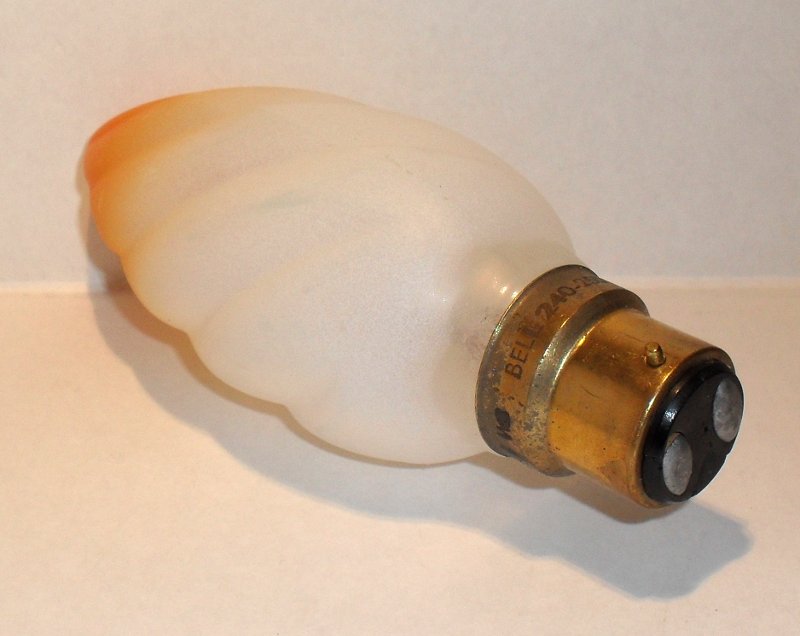
BELL 60W Twisted Candle Lamp with Amber Tip - Detail of lamp cap
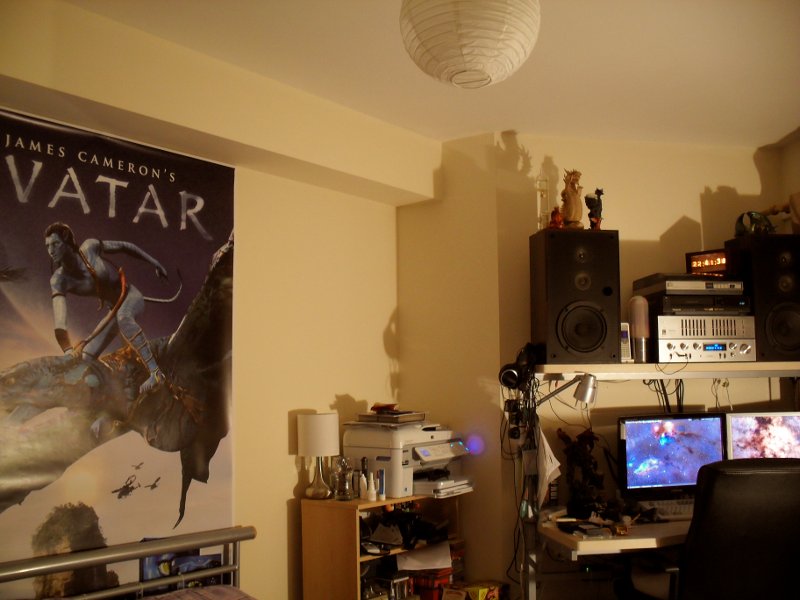
BELL 60W Twisted Candle Lamp with Amber Tip - Illuminating one side of my room from a distance of approximately two metres
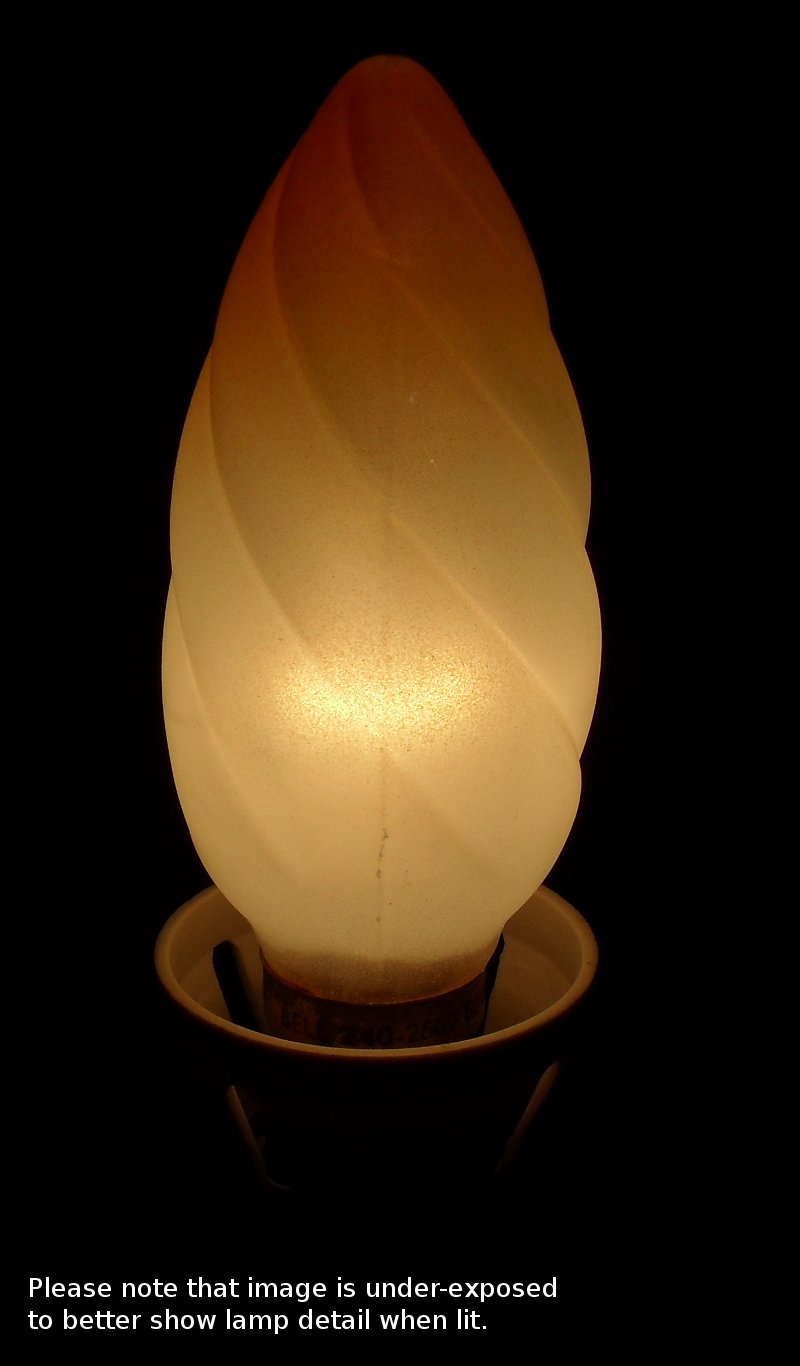
BELL 60W Twisted Candle Lamp with Amber Tip - Detail of lamp shown while alight (1/2)
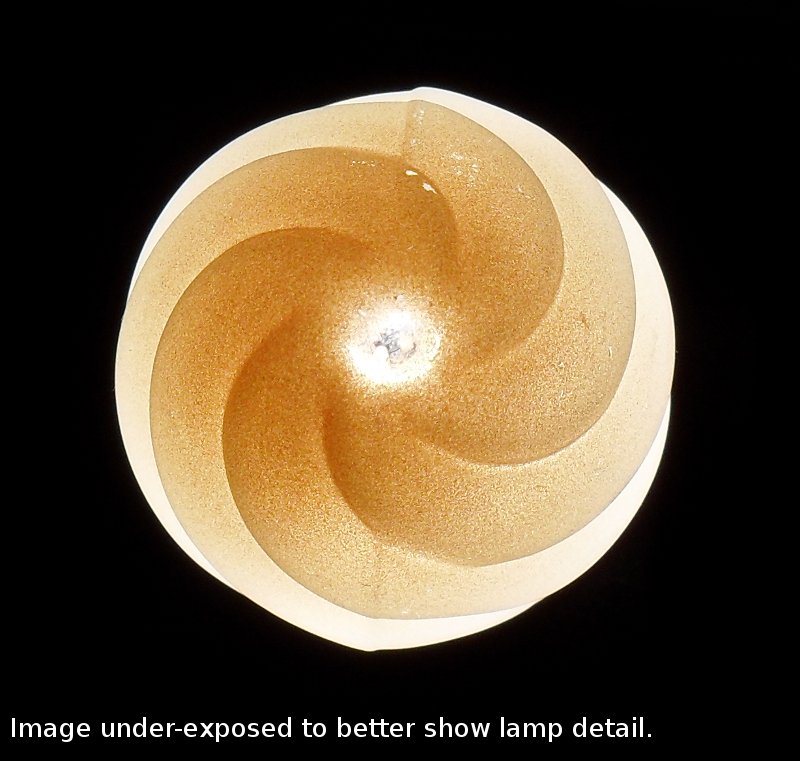
BELL 60W Twisted Candle Lamp with Amber Tip - Detail of lamp shown while alight (2/2)
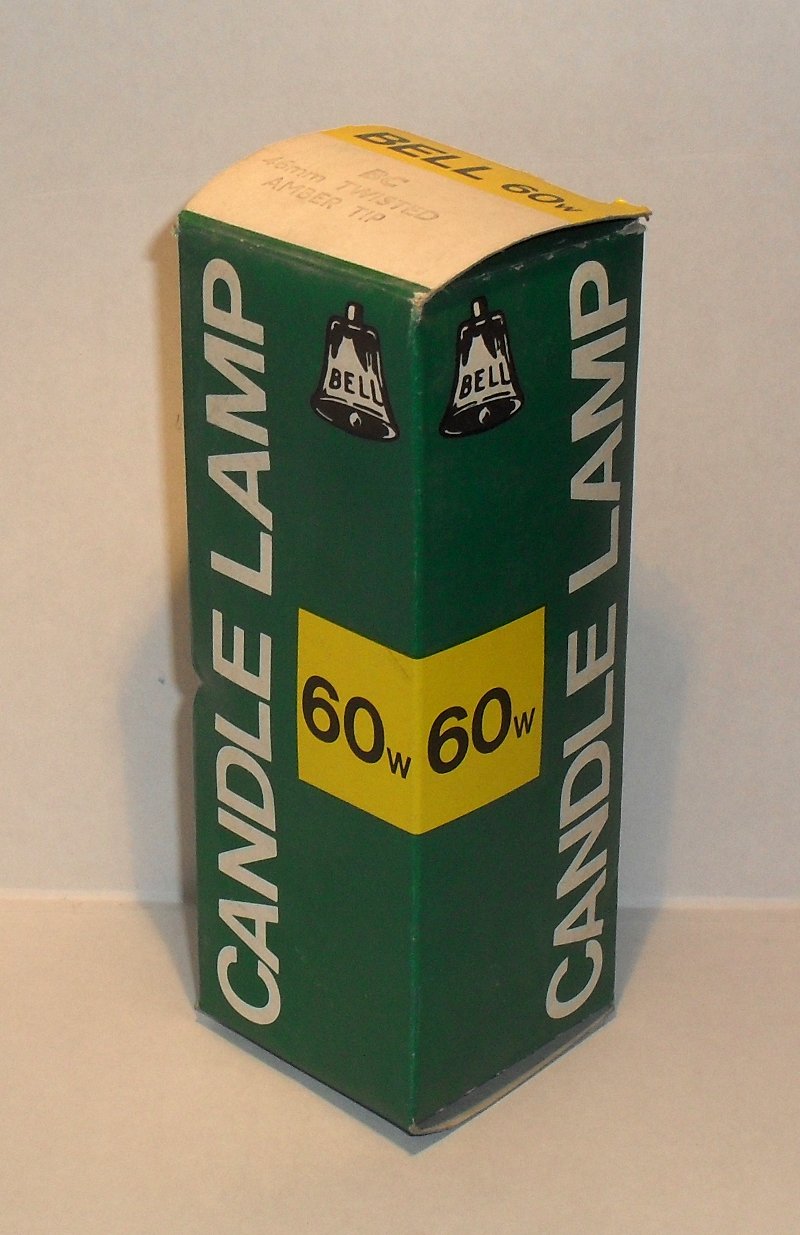
BELL 60W Twisted Candle Lamp with Amber Tip - Overview of lamp packaging
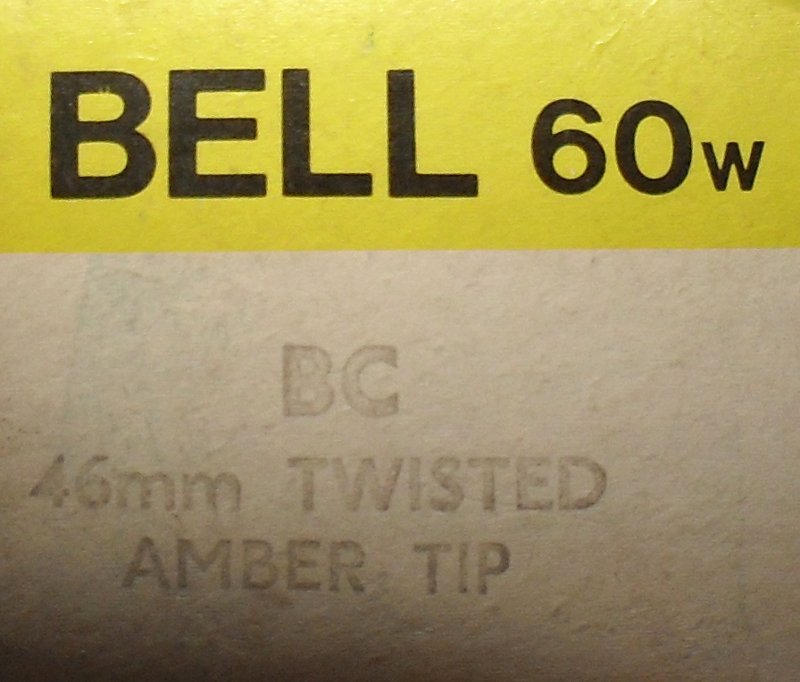
BELL 60W Twisted Candle Lamp with Amber Tip - Detail of printed text on top of packaging

BELL 60W Twisted Candle Lamp with Amber Tip - Shown held in hand for scale

BELL 60W Twisted Candle Lamp with Amber Tip - Displayed with ruler to show size of lamp
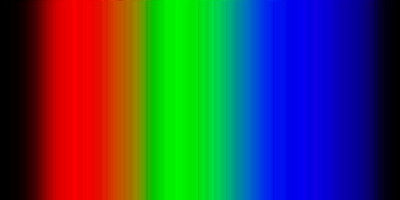
BELL 60W Twisted Candle Lamp with Amber Tip Output Spectra
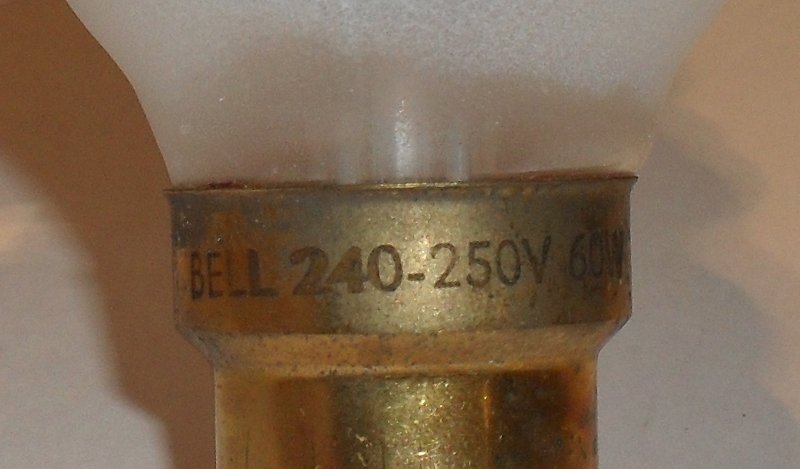
BELL 60W Twisted Candle Lamp with Amber Tip - Detail of text printed on lamp base

This lamp added to the Virtual Display Shelf on the 9th August 2010 at 20:41.
References: None.
Acknowledgements: Many thanks to the website reader who donated this lamp (amongst many, many others) for display.
This page last updated:
16th June 2023: Made changes to page format to improve readability on mobile devices. Also some background page code changes to improve search engine behaviour.